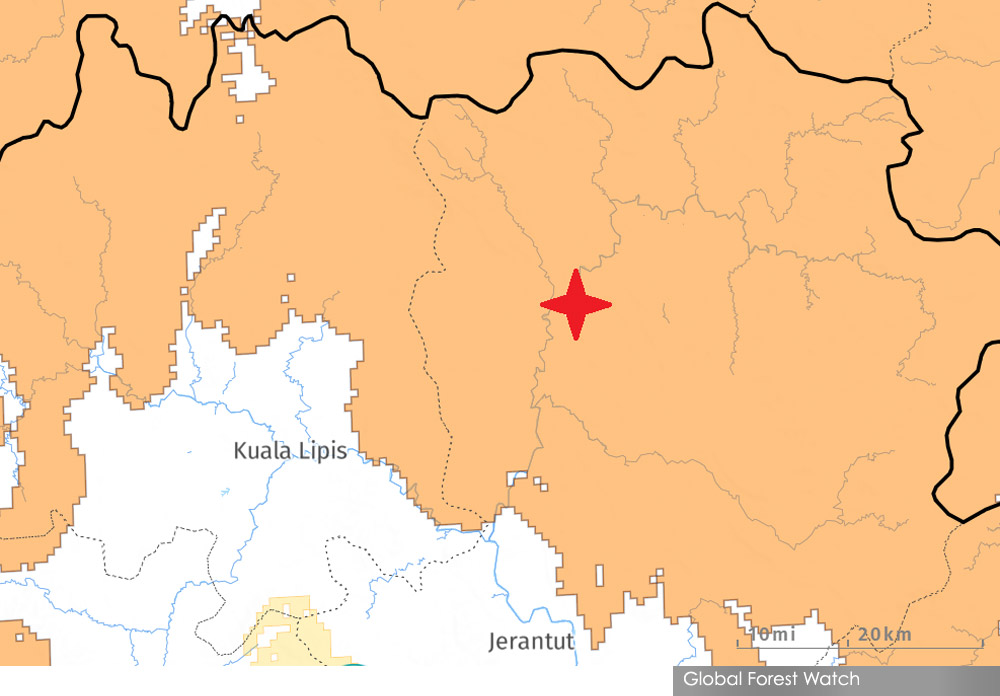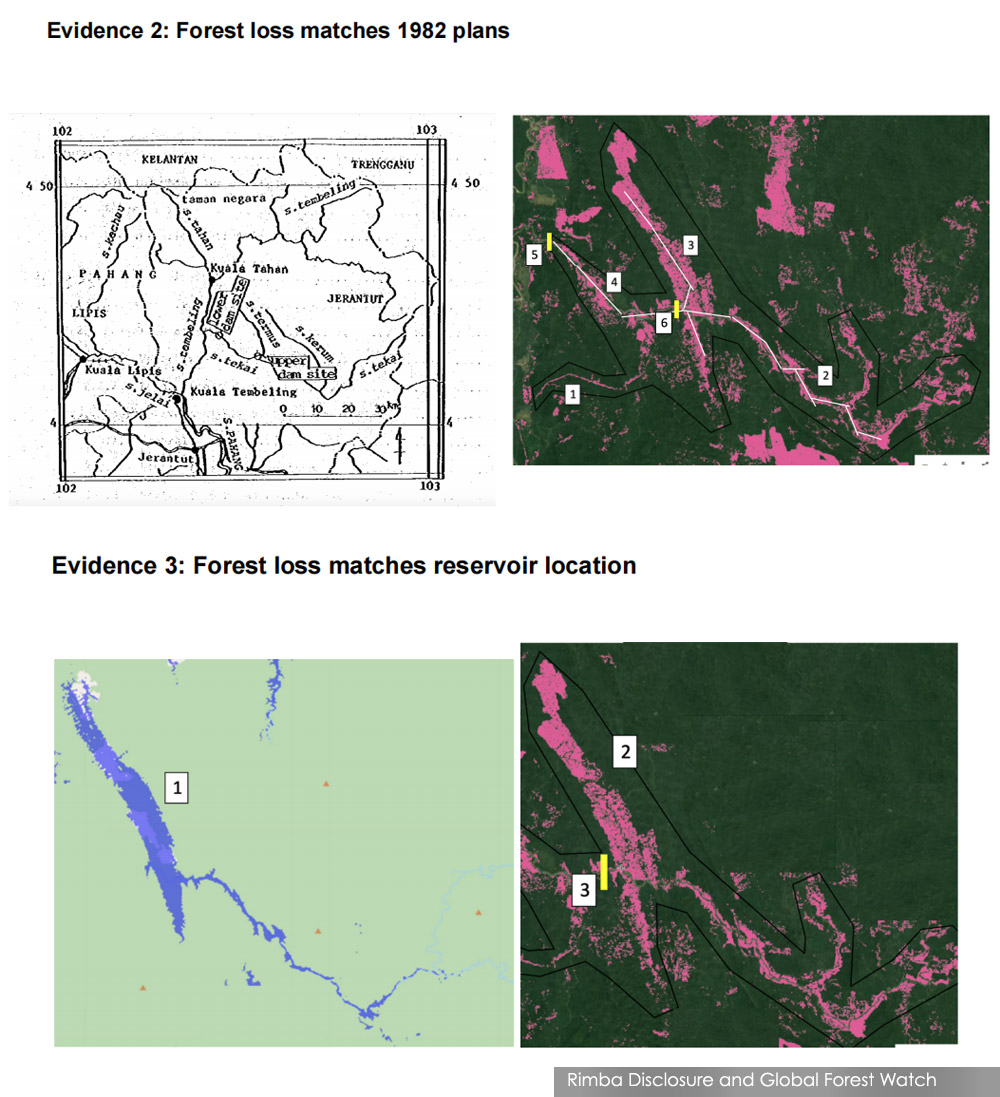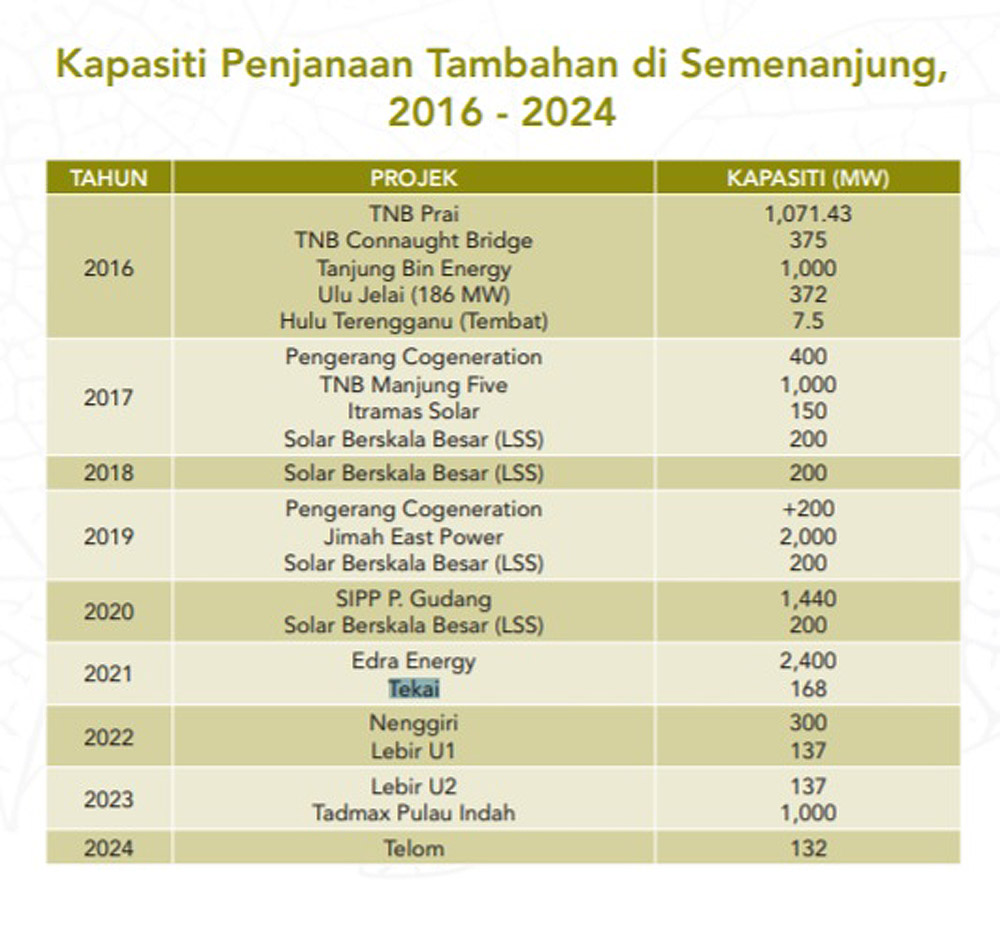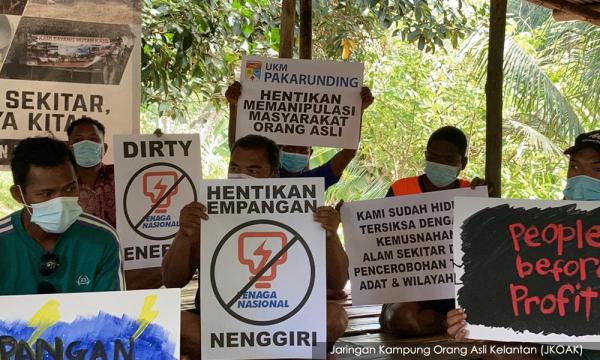The Tekai hydroelectric project was among six energy projects cancelled by the Pakatan Harapan government for being "unfeasible", but it may have been too late as satellite images show massive forest loss in the Tekai Forest Reserve, environmentalists said.
The forest loss is estimated to be about 9,150ha, twice the size of Putrajaya, environmental group Rimba Disclosure Project said, based on satellite imagery provided in the Global Forest Watch’s database.
Rimba Disclosure said the dam is also located near Kampung Tekai Orang Asli, while the forest reserve, next door to the Taman Negara, is also a known habitat for endangered species like the Malayan Tiger.
The environment group also fears that the project is being revived “quietly”, given the extent of the deforestation.
“The project likely involves the loss of virgin forests, and will serve to fragment this forest complex, thus affecting the survival of endangered species, including the Malayan Tiger,” said an activist from Rimba Disclosure, who declined to be named.
Rimba Disclosure is a youth-led initiative primarily advocating for the transparency of various parties responsible for the loss of Malaysia’s rainforests.
Aiming to be a centralised source of data, the group utilises a combination of data from geographic information systems and alerts, including Global Forest Watch and Hutan Watch, news monitoring and EIA reports.

In December 2019, then energy, science, technology, environment and climate change minister Yeo Bee Yin told Parliament that Tekai was among six energy plant projects awarded through direct negotiations by the BN government that have been cancelled because they were found to be "not needed or not feasible".
The cancellation was to save the government RM11 billion over 20 years in energy costs and translate to a reduction of electricity tariffs of 0.4 sen per kilowatt per hour in that period, she had said.
However, satellite imagery showed that forest clearing for the project may be well on its way, with recorded forest loss matching the plans for the project, first proposed in 1982.

Rimba Disclosure also questioned if the additional forest was being cleared beyond what was required for the reservoir.
It believes this might be the case, based on patterns of the forest clearing in the satellite imagery.
“This happened during the construction of the Tembat Dam in Terengganu, where a much larger area than the actual reservoir footprint was logged,” the environmental group said.
TNB: No direction from the government
When contacted, the project owner, Tenaga Nasional Bhd, said it cannot provide any information about the project.
“We are unable to provide further information at this juncture, as there is no direction from the government to TNB on the project,” a spokesperson said.
However, Rimba Disclosure said that this is not assurance enough as there is an environmental impact assessment (EIA) approved for this project in 2016.
The Energy Commission did not respond to Malaysiakini's questions, while the newly-appointed Energy and Natural Resources Minister Takiyuddin Hassan’s office said it is still waiting for further information before it can respond.
When contacted, the environment minister’s office said it has forwarded queries to the Energy and Natural Resources Ministry as the dam project is under the latter’s purview.
However, an analyst report by investment bank PublicInvest last month said that the Tekai project is one of two of TNB’s large-scale hydroelectricity projects. The other is the controversial Nenggiri project in Gua Musang, Kelantan, which TNB confirmed was going ahead.
In its 2020 economic report, the Finance Ministry also made a cursory mention of the Tekai project to be among the projects to sustain public spending in the utility sector.
TNB was awarded the project in 2012, while the EIA process took place in 2015.
However, when asked about the cost in Parliament in 2017, the government said it was still being estimated. An independent report noted that it costs about US$600 million (about RM2.4 billion).
The project, located in the district of Jerantut, consists of two cascading dams - the Upper Tekai Dam and the Lower Tekai Dam, both of which will have surface power stations.
An Energy Commission report in 2017 (below) stated that the project was due to be completed in 2021.
Impact on wildlife, carbon sink, rivers and indigenous people
Besides the impact on endangered wildlife and loss of carbon sink, construction of the Tekai Dam has also been linked to the Sungai Pahang running dry in 2016.
Ordering a technical report, then menteri besar Adnan Yaakob said the construction of the Tekai and Jelai hydroelectric dams in the area, along with forest clearing, was “one of the reasons for Sungai Pahang going dry”.
Similar to the Nenggiri dam in Gua Musang, the Tekai project also impacts local Orang Asli residents, with TNB engaging with the community as early as 2014.
Responding to a question in Parliament in 2017 on the impact of several power plants, including the Tekai project, on the Orang Aslit, the government said it had taken this into account.
“The government is aware of the issues faced by the Orang Asli in this area, so we will ensure the involvement of the Orang Asli in every decision made about the various plants,” it said.
However, unlike Tekai, the Nenggiri Dam is undergoing heavy scrutiny by environmental groups and resistance from the local Orang Asli residents. The Nenggiri project will commence work in 2022.
“There is a large amount of media and NGO scrutiny on the Nenggiri Dam... and we wonder if the relevant parties are trying to avoid that by being as quiet as possible about Tekai,” Rimba Disclosure said.
“Scrutiny by media and NGO on this project will inevitably bring up Orang Asli issues which will challenge the viability of the project,” they added. - Mkini






No comments:
Post a Comment
Note: Only a member of this blog may post a comment.